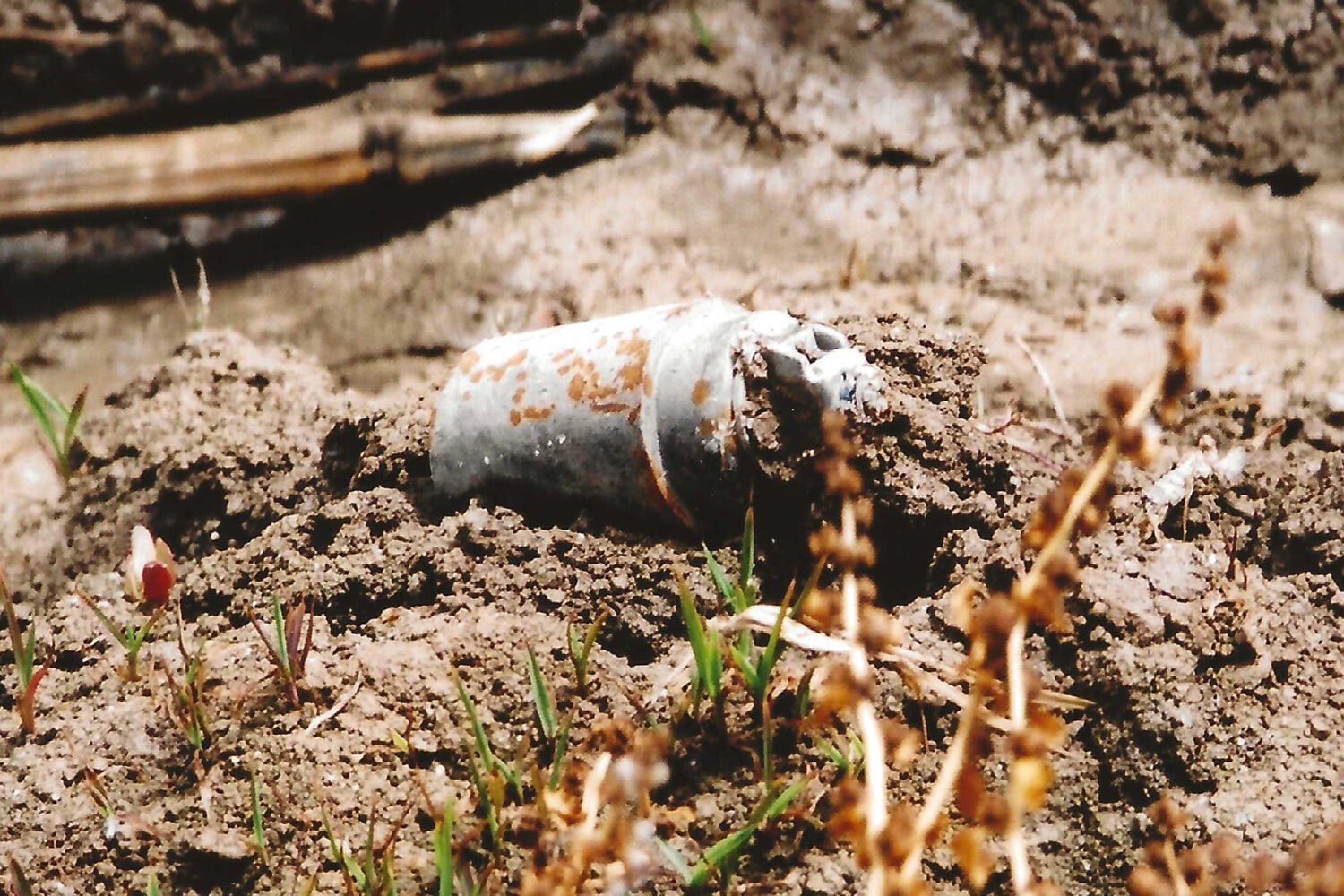In July, President Joe Biden’s administration announced that it would soon begin sending cluster munitions to Ukraine to support the country’s fight against Russia’s invasion. The weapons, which have been used extensively by Russia and to a lesser degree by Ukraine since the war began in February 2022, contain small submunitions that spread far and wide and don’t always explode on impact. These undetonated bomblets can then riddle the landscape for years or even decades after an attack, which is why they pose grave threats to civilians both during and after a conflict, says Bonnie Docherty ’01, a lecturer on law at Harvard Law School’s International Human Rights Clinic and director of its Armed Conflict and Civilian Protection Initiative.
Recognizing the danger of cluster munitions, more than 100 countries have signed a treaty to ban their use — a list that does not include U.S., Russia, or Ukraine, adds Docherty, who is also a senior researcher in the Arms Division of Human Rights Watch. Now, following what President Biden called a “difficult decision,” the U.S. has begun supplying the controversial weapon to Ukraine at least temporarily, and has pledged to work with the country to minimize the impact on noncombatants.
But such promises won’t prevent the needless fatalities that will result from the weapons today and long after the war is over, insists Docherty. In an interview with Harvard Law Today, Docherty explains how cluster munitions are being used in the conflict, why they are particularly perilous — and why she believes the U.S. is making a lethal mistake in providing them to Ukraine.

Harvard Law Today: At the beginning of the war in Ukraine, you spoke with Harvard Law Today about Russia’s use of cluster munitions and why they pose threats to civilians. Have your views changed since we last spoke?
Bonnie Docherty: My views about the dangers of cluster munitions have not changed at all. If anything, they have been reinforced by what I’ve seen in Ukraine. These are weapons that cause significant harm in the short term, because of their wide area effect — they cannot distinguish between soldiers and civilians. They also cause significant long-term harm, because many of them don’t explode on impact. They lie around like landmines and can endanger civilians, particularly children, for months and years to come. It’s something I’ve seen on field missions in Afghanistan, Iraq, Lebanon, Georgia, and other places.
HLT: How have cluster munitions have been used in the war in Ukraine so far?
Docherty: Russia has used them widely — beginning on the first day of its invasion. This has already led to hundreds of civilian casualties. For example, Human Rights Watch documented a major attack on a train station in Kramatorsk that killed more than 50 civilians and injured more than 100. Human Rights Watch and the United Nations have also documented the use of cluster munitions by Ukraine — even before the U.S. transfer of cluster munitions — on a smaller scale. And now, of course, in just the last week or so, Ukraine has started to use the new U.S.-provided cluster munitions.
HLT: How has the U.S. itself used cluster munitions in conflicts?
Docherty: The U.S. has used them since the Vietnam conflict. In fact, there are still millions of submunitions left in Laos and other Southeast Asian nations that continue to endanger civilians. More recently, the U.S. Air Force used them widely in Afghanistan, and the U.S. ground forces blanketed many Iraqi cities with cluster munitions in 2003, which I documented when I was with Human Rights Watch full time. Some of the same types of cluster munitions that have been sent to Ukraine were used in Iraq, where they killed and injured civilians at the time of attack and afterward.
HLT: What was your reaction when the Biden administration announced that it was going to send some of the U.S.’s stockpile of cluster munitions to Ukraine last month?
Docherty: We’re very concerned on numerous fronts. First of all, it’s a serious humanitarian concern. It will threaten the civilians of Ukraine now and will pose long-term threats to them as well. It will also cause some rebuilding problems, because many submunitions will remain for years to come. That will not only endanger civilians in the area, but also returning refugees. As you know, there’s a huge displacement problem in Ukraine, and people returning to their homes, or farmers wanting to return to their land, will face difficulties.
Ukraine is also a major agricultural producer, and these weapons pose potential risks for agricultural production. The U.S. and Ukraine have committed to clearing the unexploded submunitions, but that will take time. In the meantime, farmers will have to choose between waiting for their land to be cleared, which will affect their livelihoods, or taking the risk of farming when they may encounter submunitions on their land.
So, there’s the rebuilding issue, there’s the loss of life issue, and there is also a risk for Ukrainian troops of stepping on their own cluster munitions. There’s also a challenge to the growing stigma against cluster munitions that is associated with the Convention on Cluster Munitions, which bans these weapons and has been joined by over 120 states around the world.
Ultimately, I think this move has changed the nature of the U.S. involvement by transferring a weapon that is stigmatized, is likely to lead to unlawful attacks, and is likely to create a major humanitarian crisis in Ukraine.
HLT: The administration has argued that the weapons might be more justified because Ukraine is using them within its own territory. What do you make of that argument?
Docherty: I don’t think it matters where cluster munitions are used, because they pose the same risks wherever they are used. I don’t find that a very persuasive argument. If anything, Ukraine should be concerned about its own civilians and its own soldiers.
HLT: What about the argument that Ukraine will only use cluster munitions as a stopgap measure until they can get better weaponry?
Docherty: The argument that they’re a stopgap until other types of munitions are available for the U.S. to send to Ukraine is interesting. In my mind, it actually undermines the argument that these cluster munitions have military utility, because, in essence, they’re saying there are other weapons that are more appropriate for the circumstances.
I actually heard these kinds of problematic arguments used in Iraq in 2003. U.S. Army officers told us that they sometimes used cluster munitions when they didn’t feel like they were necessary because the Iraqi artillery outranged the U.S. unitary artillery [artillery that does not have submunitions] and cluster munitions, which had a longer range, were what was available on the ground. In other words, they didn’t need to use these dangerous munitions — they could have used something else if it was available.
HLT: Along with providing the weapons, the U.S. has promised funding to help with demining efforts. How hard is it to remove these unexploded munitions, and how successful have these efforts been elsewhere?
Docherty: We always welcome commitments to clear landmines and cluster munitions, but not at the expense of creating a new problem. Clearance is a very time-consuming, expensive, and resource-intensive process. It’s also dangerous to the deminers and explosive ordnance experts who are doing the clearance. Many individuals have lost their lives or limbs in the process of clearing submunitions.
HLT: Does the move to provide cluster munitions represent a major escalation in the U.S.’s involvement in the war in Ukraine?
Docherty: I think it’s not so much an escalation of the involvement as it is a changing of the nature of the involvement, because the U.S. is transferring a type of weapon that’s been banned by the majority of the world and is considered widely stigmatized and unacceptable by the majority of the world. Although neither the U.S. nor Ukraine is party to the Convention on Cluster Munitions, when used in populated areas, the weapon is generally indiscriminate and therefore unlawful under international law. Although Ukraine has committed not to use cluster munitions in cities, it hasn’t specified whether it will use them in smaller populated areas, such as villages or towns. That’s one potential loophole. Regardless, in my experience, when cluster munitions are deployed, they have always been used in some sort of urban area, despite the best intentions of the armed forces. So, I think there’s a serious risk that they will be used in populated areas. And again, they leave unexploded ordnance in fields and endanger farmers and children, as we discussed earlier.
Ultimately, I think this move has changed the nature of the U.S. involvement by transferring a weapon that is stigmatized, is likely to lead to unlawful attacks, and is likely to create a major humanitarian crisis in Ukraine.
